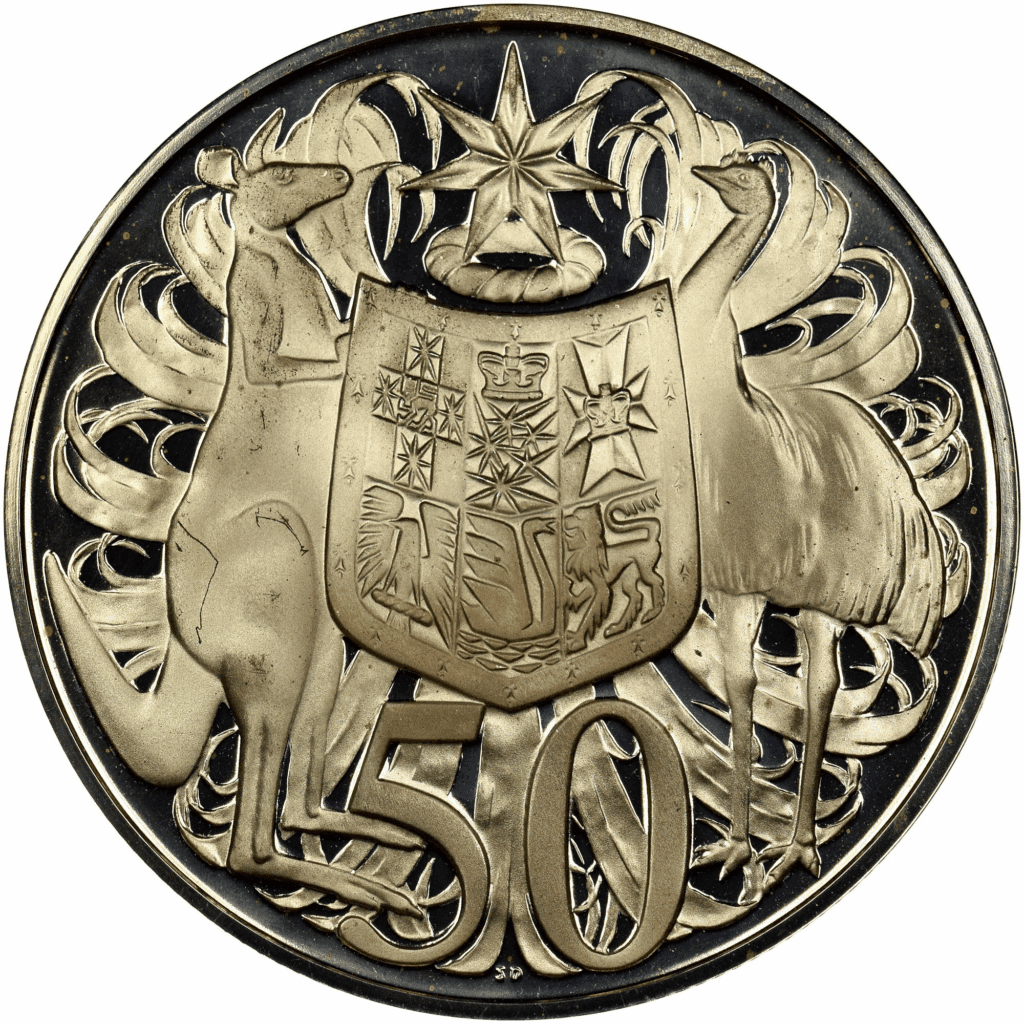Collecting Round 50 Cent Coins: A Guide
Coin collecting is a fascinating hobby that connects enthusiasts to history, culture, and economics. Among the many treasures sought by collectors worldwide, the Australian 50 cent coin holds a special place. This guide explores the allure of the 1966 round 50 cent coin, its history, and its value.
So let’s cut to the chase, the Golden rule is every 3 x 1966 50c Australian coins= 1oz pure silver.
This puts 3 of these rounds at a current market value of: $100.50 Australian Dollars in melt value alone or $34.25 for 1 a single 1966 50c round. These prices update every 3 minutes to pull the latest market spot pricing.
The Australian 50 cent coin was first introduced in 1966, coinciding with the country’s transition to decimal currency. Initially, these coins were round and crafted from 80% silver and weigh 13.28g, making them quite distinct from today’s dodecagonal (12-sided) coins made of copper-nickel.
The 1966 round 50 cent coin, or “round 50 cent piece,” quickly became popular due to its unique design and composition. However, the rising cost of silver soon outweighed the coin’s face value, leading to its withdrawal from circulation.
The original 1966 round 50 cent coins were made from 80% silver and 20% copper. This composition gave them a unique luster and weight, significantly contributing to their collectible value today. In contrast, contemporary 50 cent coins are composed of 75% copper and 25% nickel, resulting in a more durable but less valuable coin.
In 1969, the Royal Australian Mint introduced the dodecagonal 50 cent coin to replace the silver round coins. These new coins are larger in diameter but lighter, with a distinctive 12-sided shape that sets them apart from other denominations. The 1966 round 50 cent coin is a favorite among collectors, primarily due to its silver content and historical significance. As with many collectible coins, the value of a round 50 cent piece depends on several factors, including its condition, rarity, and demand among collectors.
- Condition: Coins in mint or near-mint condition are generally more valuable. Look for coins without scratches, dents, or discoloration to maximize value.
- Rarity: While approximately 36 million round 50 cent coins were minted in 1966, many have been melted down for their silver content. As a result, their rarity has increased over time.
- Demand: The demand for round 50 cent coins can fluctuate based on market trends and collector interest. Coins with unique errors or historical significance often attract higher prices.
The value of a 1966 round 50 cent coin can vary widely. On average, these coins can fetch between $10 and $30, though pristine specimens or those with unique features may command higher prices. It’s always wise to consult a professional numismatist or reputable coin dealer to assess a coin’s current market value.
While the round 50 cent coin is a standout, several other Australian 50 cent coins are considered valuable. Here’s a list of coins that might be worth more than their face value:
The 1966 Australian fifty cent coin, with its round shape and silver content, remains a top choice for collectors. As discussed, its value is largely tied to condition, rarity, and demand.
Australia frequently issues commemorative 50 cent coins to celebrate significant national events. You can see some of them amongst our full range of Australian Coins. These limited-edition coins often feature unique designs and can be highly sought after by collectors. Some notable examples include:
- 1970 Captain Cook Bicentenary Coin: Celebrating the 200th anniversary of Captain Cook’s landing in Australia.
- 2000 Millennium Coin: Marking the turn of the century with a unique design. Coins with minting errors, such as double strikes or misaligned dies, can be particularly valuable.
Collectors prize these coins for their uniqueness and rarity. Building a collection of Australian 50 cent coins can be both rewarding and enjoyable. Here are some tips to help you start and maintain your collection:
Decide whether you want to collect specific types of 50 cent coins, such as round coins, commemoratives, or error coins. Having a focus will help you build a cohesive and meaningful collection.
Use gloves or hold coins by their edges to avoid transferring oils from your fingers, which can cause tarnishing or damage. Avoid cleaning coins, as this can decrease their value. Invest in quality storage solutions such as coin albums, holders, or cases to protect your coins from environmental damage. Keep them in a cool, dry place away from direct sunlight.
Join numismatic clubs or online forums to connect with other collectors and stay updated on market trends. Regularly check auction sites and dealer listings to track coin values and availability.
Collecting Australian 50 cent coins, particularly the iconic round 50 cent piece, offers a fascinating glimpse into the country’s history and numismatic artistry. Whether you’re a seasoned collector or a curious newcomer, understanding the factors that contribute to a coin’s value can enhance your collecting experience.
With careful research and a keen eye for detail, you can build a valuable and rewarding collection of these historic coins. Be sure to check out our Perth Mint numismatic silver guide – happy collecting!




